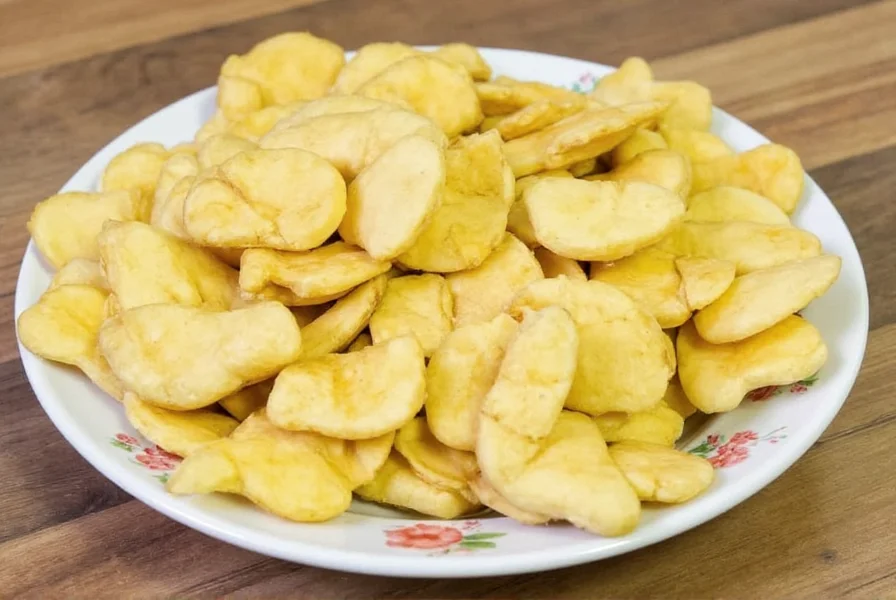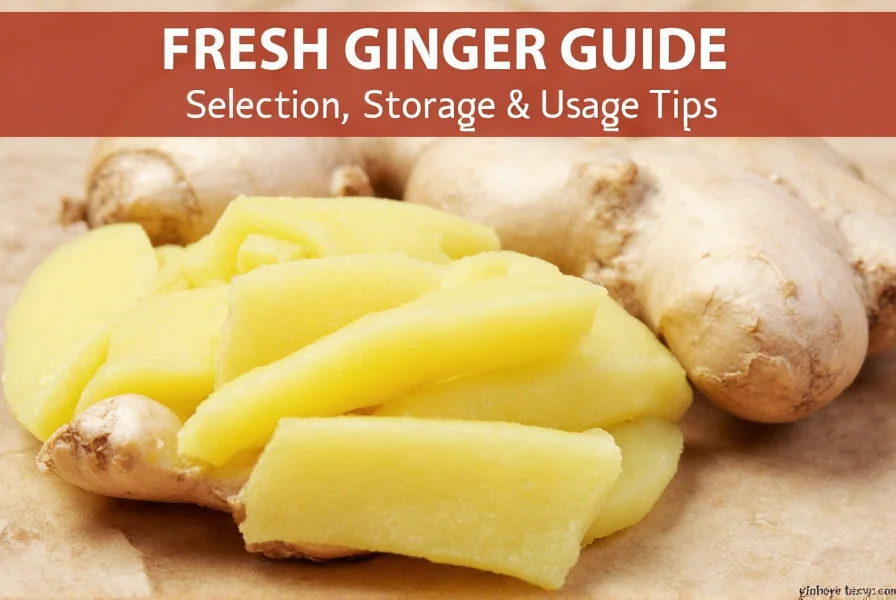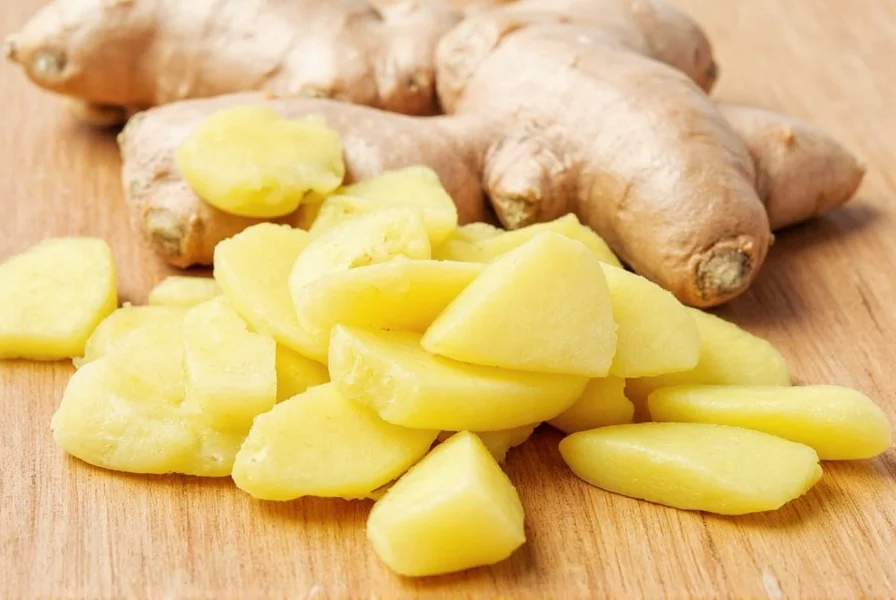Understanding Fresh Ginger: Nature's Flavor Powerhouse
When you search for ginger fresh, you're likely seeking practical information about this versatile root. Fresh ginger isn't actually a root but a rhizome—an underground stem that stores nutrients. This distinction matters because it affects how the plant grows and how we use it in cooking and wellness routines.
Selecting Quality Fresh Ginger
Knowing how to select good fresh ginger makes all the difference in your culinary creations. Look for these characteristics when choosing ginger at your local market:
- Firm texture with no soft spots or wrinkles
- Smooth, tight skin (avoid shriveled appearance)
- Strong ginger aroma when scratched
- Plump shape with many "eyes" or growth nodes
- Heavy feel for its size (indicates moisture content)
Young ginger typically has thinner skin and a milder flavor, while mature ginger develops thicker skin and more intense heat. For most culinary applications, medium-sized pieces (4-6 inches) offer the best balance of flavor and usability.

Optimal Storage Methods for Maximum Freshness
Proper storage dramatically extends the shelf life of your ginger. Understanding how to store fresh ginger properly prevents waste and maintains quality:
| Storage Method | Duration | Best For |
|---|---|---|
| Cool, dark pantry | 1 week | Immediate use |
| Refrigerator (whole) | 3-4 weeks | Regular cooking needs |
| Refrigerator (peeled, in water) | 1 month | Frequent use |
| Freezer (sliced) | 6 months | Long-term preservation |
For refrigeration, wrap unpeeled ginger in a paper towel then place in a resealable plastic bag. Change the paper towel weekly to absorb excess moisture. If you frequently use ginger, store peeled chunks submerged in water in an airtight container, changing the water every few days.
Preparing and Using Fresh Ginger
How to prepare fresh ginger properly affects both flavor and texture in your dishes. Unlike dried ginger powder, fresh ginger offers a bright, zesty quality that transforms recipes:
- Peel only when necessary (scrubbing often suffices)
- Use a spoon to easily remove skin from curved sections
- Grate for maximum surface area and flavor release
- Slice paper-thin for teas and infusions
- Mince finely for marinades and dressings
One tablespoon of freshly grated ginger equals approximately 1/8 teaspoon of ground ginger, but the flavor profile differs significantly. Fresh ginger provides a sharper, more complex taste with citrus notes that dried ginger cannot replicate.
Health Benefits: What Science Says
Research supports several potential benefits of fresh ginger health benefits, though it's important to maintain realistic expectations. The active compound gingerol gives fresh ginger its characteristic bite and potential therapeutic properties:
- Digestive support: May help reduce nausea and improve digestion
- Anti-inflammatory effects: Contains compounds that may reduce inflammation markers
- Antioxidant properties: Helps combat oxidative stress
- Circulation support: May promote healthy blood flow
These effects appear most pronounced when consuming fresh ginger rather than processed forms. A 2022 review in the Journal of Food Science and Nutrition noted that fresh ginger retains higher concentrations of bioactive compounds compared to dried or cooked preparations.
Culinary Applications Across Cuisines
Fresh ginger shines in diverse culinary traditions. Understanding using fresh ginger in cooking opens doors to authentic flavor profiles:
- Asian cuisine: Essential in stir-fries, soups, and marinades
- Caribbean cooking: Features in jerk seasonings and stews
- Middle Eastern dishes: Adds complexity to spice blends
- Beverages: Creates vibrant ginger teas and cocktails
- Baking: Provides warm notes in cookies and cakes
For maximum flavor impact, add grated ginger early in cooking for milder flavor or later for more pronounced heat. When making ginger tea, simmer sliced ginger for 10-15 minutes to extract maximum flavor without bitterness.
Fresh Ginger vs. Ground Ginger: Key Differences
The question of fresh ginger vs ground ginger often confuses home cooks. While both come from the same plant, their properties differ significantly:
- Flavor profile: Fresh offers bright, citrusy notes; ground provides warmer, earthier tones
- Potency: Fresh contains higher gingerol levels (up to 5% vs. 1-2% in dried)
- Shelf life: Fresh lasts weeks; ground maintains quality for 6-12 months
- Culinary role: Fresh works best in raw applications; ground integrates better in baked goods
- Nutritional value: Fresh retains more volatile compounds and enzymes
When substituting between forms, remember that fresh ginger provides a more complex flavor experience with different chemical properties than its dried counterpart.

Growing Your Own Fresh Ginger
For those interested in a continuous supply, growing ginger at home offers satisfaction and freshness. Select organic ginger root (conventional may be treated to prevent sprouting), plant in well-draining soil with the eye facing up, and maintain consistent moisture. Ginger grows best in warm, humid conditions with partial shade. After 8-10 months, you can harvest your homegrown ginger, which often tastes superior to store-bought varieties.
Conclusion: Maximizing Your Ginger Experience
Understanding how to select, store, and use ginger fresh transforms ordinary dishes into extraordinary culinary experiences. By choosing quality ginger, storing it properly, and using appropriate preparation techniques, you unlock the full potential of this remarkable rhizome. Whether you're exploring its potential wellness benefits or simply enhancing your cooking, fresh ginger remains one of nature's most versatile flavor powerhouses.
Frequently Asked Questions
How long does fresh ginger last in the refrigerator?
Properly stored fresh ginger lasts 3-4 weeks in the refrigerator when kept whole and unpeeled in a resealable bag with a paper towel to absorb moisture. For even longer storage, submerge peeled ginger chunks in water in an airtight container, changing the water every few days, which can extend freshness up to one month.
Can you freeze fresh ginger for later use?
Yes, freezing is an excellent way to preserve fresh ginger. Peel and slice the ginger into thin coins or grate it before freezing. Store in an airtight container or freezer bag for up to 6 months. Frozen ginger can be grated directly from frozen without thawing, making it convenient for regular use in cooking and beverages.
What's the difference between young and mature ginger?
Young ginger has thinner, smoother skin and a milder, juicier texture with less heat. It's often used in pickling and delicate dishes. Mature ginger develops thicker skin, more fibrous texture, and stronger, spicier flavor. Most grocery stores sell mature ginger, which works better for cooking applications requiring robust ginger flavor.
How do you know when ginger has gone bad?
Ginger has spoiled when it becomes soft or mushy, develops dark spots or mold, loses its characteristic aroma, or shows visible signs of decay. Fresh ginger should feel firm and smell spicy and citrusy. If it smells sour or fermented, it's past its prime and should be discarded.











 浙公网安备
33010002000092号
浙公网安备
33010002000092号 浙B2-20120091-4
浙B2-20120091-4